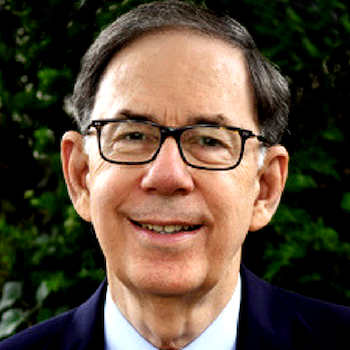Back to series


Hindrances To Discipleship: The Devil
(This is part one of a four-part series on Hindrances to Discipleship Part 1, Part 2, Part 3, Part 4.)
Click here to open a Print - Friendly PDF
 There are three major hindrances to following Jesus Christ: the world, the flesh, and the devil (Eph. 2:1–3). These hindrances hold us in blindness and bondage before we come to faith in Christ. After conversion, they interact with one another to create a challenging array of problems, internal and external, for every disciple. We will examine them individually, making observations along the way about how they work with one another to hinder our progress in the life of grace.
There are three major hindrances to following Jesus Christ: the world, the flesh, and the devil (Eph. 2:1–3). These hindrances hold us in blindness and bondage before we come to faith in Christ. After conversion, they interact with one another to create a challenging array of problems, internal and external, for every disciple. We will examine them individually, making observations along the way about how they work with one another to hinder our progress in the life of grace.
Every era has had its own blind spots, and ours is no exception. A notable example in our day is the denial of the existence of the devil.
Does the Devil Exist?
Secularization, driven along by a naturalism that denies the existence of anything spiritual or metaphysical, has had a profound effect on Americans, whether they are believers or not. In 2002 Barna Research reported that “Six out of ten Americans (59%) reject the existence of Satan, indicating that the devil, or Satan, is merely a symbol of evil.”1
In 2009 Barna reported that 59 percent of professing Christians also rejected the existence of Satan.2 Only 26 percent strongly agreed that they believe Satan is real.

Unlike our ancestors, we hear few sermons today about “things unseen,” such as heaven, hell, angels, or demons, and most believers give little thought to the reality of spiritual battle that surrounds them.
Church historian Richard Lovelace says, “A study of this subject throughout the history of Christian experience reveals that leaders in most other periods of the church’s history have found conflict with fallen angels to be a regular feature of their daily existence and have sought to cope with it in
biblical terms.”3
Commenting on this strange state of affairs, John Stott said,
It is unfashionable nowadays in the church (even while satanism flourishes outside it), to believe either in a personal devil or personal demonic intelligences under his command. But there is no obvious reason why church fashion should be the director of theology, whereas the plain teaching of Jesus and his apostles (not to mention the church of the subsequent centuries) endorsed their malevolent existence.4
C.S. Lewis also commented on our tendency toward imbalance in this area. “There are two equal and opposite errors into which our race can fall about the devils. One is to disbelieve in their existence. The other is to believe, and to feel an excessive and unhealthy interest in them.”5 Clearly, American society and the church have swung strongly to the first error.
No doubt the devil is very pleased with this development. Just as spy rings can be more effective when their existence is unknown, so the devil and his angels are more effective when people are unaware of their existence. As Lovelace notes, “Most of the devil’s advantage depends on the ability to move among human affairs undetected.”6
A Biblical Portrait of Satan
A careful study of the Bible, particularly the New Testament, gives us valuable and much-needed insights about the devil, his schemes, and how to avoid being ensnared by him.
And never has the need been greater. As J.I. Packer said concerning the devil and spiritual warfare, “The Christian’s life is not a bed of roses; it is a battlefield on which he has constantly to fight for his life. The first rule of success in war is know your enemy”.7
John Stott agreed and offered wise advice about knowing our enemy: “We need to rid our minds of the medieval caricature of Satan. Dispensing with the horns, the hooves and the tail, we are left with the biblical portrait of a spiritual being, highly intelligent, immensely powerful and utterly unscrupulous.”8
When we turn to the biblical portrait, we learn that Satan (Hebrew: adversary) or the devil (Greek: slanderer) is the archenemy of God and the cruel and malicious adversary of those created in God’s image. Names like adversary, slanderer, tempter, deceiver, liar, murderer, accuser, and evil one are applied to him in the Bible, and these give a sense of his character.
He is an evil, supernatural being, a fallen angel of such rank and power that even the archangel Michael, when disputing with him “did not presume to pronounce a blasphemous judgment, but said, ‘The Lord rebuke you’” (Jude 9).9
However, he is a created being, and is not eternal, self-existent, or equal to God in any respect. Thus he is not omnipresent, omniscient, or omnipotent. And he cannot read our thoughts and does not know the future.
Rather, the devil is a creature subject to God’s sovereign restraint and can go no further than God permits (Job 1–2). He was decisively defeated by Jesus at the Cross, but he is still at large and is a dangerous foe until Christ’s second coming (Matt. 25:41).
How Satan became evil is not explained in the Bible, though there are hints that ambitious pride prompted his revolt against God (1 Tim. 3:6).
His pride and arrogance are certainly evident in his temptation of Eve (Gen. 3:1–5) and of Jesus (Luke 4:5–7). Some scholars have suggested that there might be poetic allusions to Satan’s fall in Isaiah 14:12–14 and Ezekiel 28:11–19. These two passages depict the willfulness of the king of Babylon and the pride of the king of Tyre but seem to far transcend what properly can be said of them.
This raises the interesting but unanswerable question of whether there is also a veiled reference to Satan energizing and working through them in the background. The passage is worth pondering.
Whatever the origin of Satan’s fall, it is clear that many other angels joined his rebellion (Rev. 12:7–9) and now form an organized hierarchy under his command (Eph. 6:10–12).10 They war against God and His people and seek to advance evil throughout the world, aiming for total control.
The opening salvo in this war came when the devil, working through a serpent, deceived Eve and enticed her to disobey God, bringing about the fall of the human race (Gen. 3:1–7). This gave him great influence over fallen people and their societies. How much influence does he have in the world? When tempting Jesus,
The devil took him up and showed him all the kingdoms of the world in a moment of time, and said to him, “To you I will give all this authority and their glory, for it has been delivered to me, and I give it to whom I will. If you, then, will worship me, it will all be yours.” (Luke 4:5–7)
Interestingly, Jesus did not dispute the devil’s claim to having significant authority over the kingdoms of this world (perhaps gained at the Fall).
Jesus spoke of Satan’s kingdom (Matt. 12:26) and referred to him as the “ruler of this world (John 12:31, 14:30, 16:11). John the apostle says that “the whole world lies in the power of the evil one” (1 John 5:19). And the apostle Paul refers to him as “the god of this world” (2 Cor. 4:4) and “the prince of the power of the air” (Eph. 2:2).
Although the devil does not have absolute control over the world, he and his angels do have considerable power to create harm in pursuit of their evil goals. He can cause a range of catastrophic events, including physical afflictions and even death (Job 1–2; Luke 13:16; Heb. 2:14). His demons are able to afflict and torment people in a variety of ways, many instances of which are recounted in the Gospels. (Of course, not all physical and mental afflictions come from the devil.)
The Devil's Goals and Main Targets
From this and from what Scripture shows elsewhere, we can safely say that his goals are to reclaim or at least neutralize God’s people, to destroy the church, to overthrow the kingdom of God, to displace God as King of creation and to become the object of all worship. This helps explain much of the evil and suffering that rages on earth. Lovelace explains that normally
The destructive malice of Satan against all humanity, and particularly against the church, is channeled through human agents and the systems and institutions they have built. Humanity in general is afflicted by the destroyer through the structures of injustice and oppression of which the flesh and the devil are joint architects, and Christians are murderously attacked by individuals and governments ultimately directed by Satan.11
We see evidence of this in the political realm from nearly the beginning of time. Evil spirits seek to influence governments, their leaders and world affairs to advance Satan’s purposes. A brief glimpse of this is found in Daniel 10:13–14, where the “prince of the kingdom of Persia,” an evil spirit of high rank and power, resisted one of God’s angels who was sent to Persia to answer Daniel’s prayer.
He held the angel at bay for twenty-one days, until the archangel Michael arrived to assist him. After delivering his message to Daniel, the good angel took leave to “return to fight against the prince of Persia; and behold, when I go out, the prince of Greece will come” (Dan. 10:20).
 Another example, this one in the New Testament, is Nero’s persecution of the church in AD 64–65. Peter, Paul, and many other believers in Rome were put to death, often in unimaginably cruel ways by this madman. Writing on the eve of that persecution, Peter seems to suggest that the devil was behind the gathering storm (1 Pet. 5:8–9). And in view of Nero’s character and behavior, that seems very likely.
Another example, this one in the New Testament, is Nero’s persecution of the church in AD 64–65. Peter, Paul, and many other believers in Rome were put to death, often in unimaginably cruel ways by this madman. Writing on the eve of that persecution, Peter seems to suggest that the devil was behind the gathering storm (1 Pet. 5:8–9). And in view of Nero’s character and behavior, that seems very likely.
In Smyrna a couple of decades later, we are told that the devil worked through the machinery of government to bring about the arrest and execution of God’s people in that city (Rev. 2:10). In recent times, examples abound of widespread demonic evil perpetrated through governments influenced by atheistic ideologies such as Marxism and Nazism, and through radical Islam.
Religion and its institutions are another of the devil’s prime targets for influence and control. By inspiring and energizing false religions, the devil can deceive people and keep them away from the true God.
The pagan religions of Canaan, for example, were demonically controlled (Deut. 32:17; Ps. 106:37) and were a great snare to Israel for centuries. And in New Testament times, Paul says Greco-Roman pagan idolatry was also energized by demons (1 Cor. 10:18–22).
But it is in the church itself that the devil seeks to make his greatest impact. Paul warns believers in Corinth about false apostles and workers, saying that “Satan disguises himself as an angel of light . . . his servants, also, disguise themselves as servants of righteousness” (2 Cor. 11:14–15).
From the beginning of the church, the devil has used error, deception, division, sexual temptation, persecution, and many other schemes to undermine congregations. He has also used these means to hinder ministers, missionaries, and others engaged in preaching and teaching God’s truth and spreading the gospel (including Paul, see 1 Thess. 2:17–18).
And he has successfully captured many religious schools and theological seminaries that train ministers for the church, turning them into factories of error and heresy. In some cases, entire denominational hierarchies have been captured.
False religions and heresies have been a persistent problem throughout the centuries and today are perhaps more numerous and widespread than at any time in history. Interestingly, Paul warns that in the last days, people will be at risk from “deceitful spirits and teachings of demons” (1 Tim. 4:1).
Social, cultural, and secular educational institutions are also prime targets. The world of ideas, the world of music and art in their various forms, popular culture, and the media are all arenas through which the evil one can subtly gain influence and disseminate anti-God ideas on a widespread basis with seeming credibility.
For example, the ideas of Marx, Nietzsche and others like them have produced great evil and human suffering. The influence of existentialism on the youth culture of the 1960s is perhaps one example.
Today’s postmodernism is another. Of course, this is not to say that all expressions of the world’s culture are demonic, only to say that they are vulnerable at points to exploitation by the devil. And undiscerning people can be brought under their influence.
The personal life is where everyone must be especially alert. In Ephesians Paul warns ordinary church members against the “schemes of the devil.” He says, “. . .we do not wrestle against flesh and blood, but against rulers, against authorities, against the cosmic powers of this present darkness, against the spiritual forces of evil in the heavenly places” (Eph: 6:11–12).
 This language describes an organized hierarchy of evil spirits that is arrayed against individual believers, churches, and even institutions of society. Thus Paul exhorts the Ephesians to “take up the whole armor of God that you might be able to withstand in the evil day” (6:13).
This language describes an organized hierarchy of evil spirits that is arrayed against individual believers, churches, and even institutions of society. Thus Paul exhorts the Ephesians to “take up the whole armor of God that you might be able to withstand in the evil day” (6:13).
Peter says much the same: “Be sober-minded; be watchful. Your adversary the devil prowls around like a roaring lion, seeking someone to devour. Resist him, firm in your faith, knowing that the same kinds of suffering are being experienced by your brotherhood throughout the world” (1 Pet. 5:8–9).
The Devil's Schemes and Tactics
How does the devil seek to ensnare us? Deception and temptation to sin are his standard tools. His chief goal for anyone who has come to Christ is to recover them. As J.I. Packer says,
Satan views him as an escaped prisoner and goes to war against him to try to recapture him. He tempts (i.e., tests) the Christian with malicious intent, hoping to find a weakness and betray him into a course of action that will ultimately lead him back into the prison out of which Christ brought him.12
Specific approaches vary, but normally he tempts us to sin in our areas of weakness and at times of vulnerability. As one of the Puritans said, “The devil is a master fisherman; he baits his hook according to the appetite of the fish.” Packer observes that “he is always seeking to produce unbelief, pride, unreality, false hopes, confusion of mind and disobedience, as he did in Eden; if he cannot do this directly then he labors to do it indirectly, fostering unbalance and one-sidedness.”13
Examples in the Bible are illustrative. He ensnared Peter by means of fear (Luke 22:31–32). He filled the hearts of Ananias and Sapphira with lies (Acts 5:1–11). He captures many with sexual lust (1 Cor. 5:1). Paul warns married couples in Corinth who were devoting themselves to special prayer not to refrain from sex for too long, because “Satan may tempt you because of your lack of self-control” (1 Cor. 7:5).
Pride is a common snare (1 Tim. 3:6). Anger is a special danger and must be dealt with promptly and properly when it arises (Eph. 4:26–27). And there are many others.
Looking at temptation more broadly, Lovelace says,
Most commonly, temptation is directed toward larger ends: involving believers in whole ways of life or patterns of behavior which are subChristian, which will extinguish their spirituality and make them negative witnesses; or luring them into adopting outlooks which excuse or justify sin and which may almost totally obscure their faith.14
Materialism, worldliness, and racism are obvious examples in American evangelicalism, and there are a number of others.
Each of us needs to be aware of specific sins that we are vulnerable to and work earnestly “by the Spirit . . . [to] put to death the deeds of the body” (Rom. 8:13). J.I. Packer gives a helpful explanation of what this means:
How do we “by the Spirit put to death the misdeeds of the body”? Outward acts of sin come from inner sinful urges, so we must learn to starve these urges of what stimulates them (porn magazines, for instance, if the urge is lust; visits to smorgasbords if the urge is gluttony; gambling and lotteries if the urge is greed, and so on). And when the urge is upon us we must learn, as it were, to run to our Lord and cry for help, asking him to deepen our sense of his own holy presence and redeeming love, to give us the strength to say no to that which can only displease him. It is the Spirit who moves us to act in this way, who makes our sense of the holy love of Christ vivid, who imparts the strength for which we pray and who actually drains the life out of the sins we starve.15
Often we will need to flee from temptation when it confronts us (1 Tim. 6:11). But when that isn’t possible, we must remind ourselves that we are not helpless victims who cannot resist sin, for as Paul tells us, we will encounter no temptation that is not common to man.
And, “God is faithful, and he will not let you be tempted beyond your ability, but with the temptation will also provide the way of escape, that you may be able to endure it” (1 Cor. 10:13).
Resisting the Devil
With unbelievers, Satan’s chief goal is to blind their minds and thus keep them from seeing “the light of the gospel of the glory of Christ, who is the image of God” (2 Cor. 4:4). He uses all manner of schemes to entice them into sins and idolatries that will keep them under his influence and away from God.
Thus, “They are darkened in their understanding, alienated from the life of God because of the ignorance that is in them, due to their hardness of heart” (Eph. 4:18). And should they ever hear the word of God, he immediately snatches it away from them (Matt.13:19).
 What are our defenses against such an enemy? We must remind ourselves regularly that the devil was decisively defeated by Jesus at the Cross. Jesus came into the world to destroy the works of the devil (1 John 3:8).
What are our defenses against such an enemy? We must remind ourselves regularly that the devil was decisively defeated by Jesus at the Cross. Jesus came into the world to destroy the works of the devil (1 John 3:8).
And by shedding His blood on the cross, Christ broke the devil’s power (John 12:27–31; Col. 2:13–15; Heb. 2:14–16), paid the penalty of our sins and opened the door of salvation to all who repent and trust in Him.
This will enable us to rediscover our own liberation (Col. 2:13–15) and the authority Jesus has given us over the powers of darkness (Luke 10:17–19) and learn to exercise it rightly for our own good and the good of His church. This is crucial.
One day the devil and all who serve him will be cast into the lake of fire (Rev. 20:1–3).
Until that day he and his minions fight on. Thus we must also daily remember that our life in this world is lived on a spiritual battlefield, and we must be sober and alert. We must live by faith, keeping our eyes firmly fixed on Jesus our King, not the devil.
As E. Stanley Jones once said, “What has your attention has you.” If the devil cannot keep us blinded, he is happy to run us off a cliff through preoccupation with his activities and paranoid fear.
Another essential is a proper perspective on reality. God and the devil are not equally matched opponents, as in some types of cosmic dualism. God is infinitely more powerful than the devil, who is one of His creatures. When God is called the LORD of hosts in the Old Testament, it refers to His position as commander of heaven’s armies—armies of angels who do His bidding.
They are the vast majority of angels, far more than fell with Satan. These unseen divine agents are active in the world, serving and defending God’s people (Heb. 1:14) and battling the devil and his angels.
At the battle of Jericho, for example, the commander of the LORD’s army of invisible angels appeared to Joshua on the eve of battle to encourage him and let him know that he was not alone (Josh. 5:13–15). Another instance is when Elisha and his servant were surrounded and besieged by the army of the king of Syria, who intended to kill them. When his servant reported this to Elisha, Elisha responded,
“Do not be afraid, for those who are with us are more than those who are with them.” Then Elisha prayed and said, “LORD, please open his eyes that he may see.” So the LORD opened the eyes of the young man, and he saw, and behold, the mountain was full of horses and chariots of fire all around Elisha (2 Kings 6:16–17).
 Or consider the exciting story of Peter in the New Testament. Herod had just executed James and had arrested Peter, intending to kill him as well. Peter was in prison being guarded by four squads of soldiers. But the church made earnest prayer for him, and God sent an angel to supernaturally deliver him from prison (Acts 12:1–11).
Or consider the exciting story of Peter in the New Testament. Herod had just executed James and had arrested Peter, intending to kill him as well. Peter was in prison being guarded by four squads of soldiers. But the church made earnest prayer for him, and God sent an angel to supernaturally deliver him from prison (Acts 12:1–11).
God’s angels are on assignments throughout the world obeying God’s orders in the battle against Satan and his forces (Ps. 103:19–21). And they also watch over each of His children (Heb. 1:14).
Growing Strong in Grace
Finally, we must use all the means of grace God has provided for our growth in grace. For those who have come to faith in Christ but have not yet been baptized, this means doing so as soon as possible.
For every believer, it means being filled with the Holy Spirit daily (Eph. 5:18; Gal. 5:16–25), for “he who is in you is greater than he who is in the world” (1 John 4:4), and it was in the power of the Spirit that Jesus overcame the devil (Luke 4:1). In the Spirit’s power, we must follow the example of the early church and be continually devoting ourselves to “the apostles’ teaching and the fellowship, to the breaking of bread and the prayers” (Acts 2:42).
This is far more demanding than the halfhearted efforts most of us make. J.I. Packer elaborates on each of these:
Bible truth, preached and received through preaching, studied in the text, meditated on, applied to oneself, taken into the heart, laid up in the memory, taken as a guide for life; prayer, the regular exercise of communion and fellowship with God; worship with the Lord’s people, particularly at the Lord’s Supper but also in hearing the word proclaimed and joining in the prayers and vocal praise; and the informal fellowship and interchange of the Lord’s family as one stands by and ministers to another.16
Wholehearted commitment to Christ as Lord and obedience to known truth are essential responses to God’s grace to keep walking in the Spirit and on the path of His blessing and protection. A spiritual mentor, whether a pastor, elder, or mature believer, will be very helpful for periodic counsel (including discernment of any subtle schemes or attacks of the devil against us).
And our commitment to fellowship should include a small accountability prayer group (two or three people). Last, but by no means least, we must understand and actually put on the full armor of God (Eph. 6:10–18) and keep it in place day by day.
Much more could be said on this subject, but these disciplines of grace will keep us under the protective canopy of God’s grace and keep us growing as disciples of Jesus. They will not exempt us from temptation or attack, but they will enable us to glorify God by standing firm when it comes.
In the next issue of Knowing & Doing, we will look more closely at the world and the flesh, two key allies through which the devil works against us and Christ’s kingdom.
Notes:
1. Barna Report.
2. Barna Report.
3. Richard Lovelace, Dynamics of Spiritual Life (Downers Grove, IL: InterVarsity Press, 1979), 134.
4. John Stott, God’s New Society: The Message of Ephesians (Downers Grove, IL: InterVarsity, 1979), 73–74.
5. C.S. Lewis, The Screwtape Letters (New York: MacMillan, 1944), 9.
6. Lovelace, Dynamics of Spiritual Life. 136.
7. J.I. Packer, God’s Words (Grand Rapids: Baker Books, 1981), 85.
8. John Stott, What Christ Thinks of the Church (Wheaton, IL: Harold Shaw, 1990), 50.
9. Scripture quotations are from the English Standard Version.
10. Stott, God’s New Society, 267–275.
11. Lovelace, Dynamics of Spiritual Life, 140.
12. Packer, God’s Words, 91.
13. Packer, God’s Words, 92.
14. Lovelace, Dynamics of Spiritual Life, 137.
15. J.I. Packer, Rediscovering Holiness (Ann Arbor, MI: Servant, 1992), 175.
16. J.I. Packer, “Means of Growth” (an article in Tenth, a publication from Tenth Presbyterian Church, Philadelphia, 1981), 10.

Thomas A. Tarrants
Author, President Emeritus, CSLI Thomas A. Tarrants is President Emeritus of the C.S. Lewis Institute. After serving twelve years as president and nine years as vice President, he retired from his position as Vice President for Ministry and Director, Washington Area Fellows Program, with CSLI in June 2019. He holds a Masters of Divinity Degree, as well as a Doctor of Ministry Degree in Christian Spirituality. Tom is an ordained minister in the Evangelical Church Alliance and a member of the Evangelical Theological Society. He spends his time writing, mentoring, consulting and traveling. His life story is told in Consumed by Hate, Redeemed by Love, published by Thomas Nelson Publishers. COPYRIGHT: This publication is published by C.S. Lewis Institute; 8001 Braddock Road, Suite 301; Springfield, VA 22151. Portions of the publication may be reproduced for noncommercial, local church or ministry use without prior permission. Electronic copies of the PDF files may be duplicated and transmitted via e-mail for personal and church use. Articles may not be modified without prior written permission of the Institute. For questions, contact the Institute: 703.914.5602 or email us.
COPYRIGHT: This publication is published by C.S. Lewis Institute; 8001 Braddock Road, Suite 301; Springfield, VA 22151. Portions of the publication may be reproduced for noncommercial, local church or ministry use without prior permission. Electronic copies of the PDF files may be duplicated and transmitted via e-mail for personal and church use. Articles may not be modified without prior written permission of the Institute. For questions, contact the Institute: 703.914.5602 or email us.
-
Recent Podcasts
A Welcome Change in Apologetics
by Randy Newman, Aimee Riegert on April 19, 2024We’re burdened for our friends who don’t know...Read More
-
Questions That Matter Podcast – Samuel James and Digital Liturgies
by Samuel James, Randy Newman on April 19, 2024
-
The Side B Stories – Dr. James Tour’s story
by Jana Harmon, James Tour on April 12, 2024
-
Recent Publications
Isn’t Morality Relative?
by Christopher L. Reese on April 1, 2024It is widely accepted in the Western world...Read More
-
Do Muslims and Christians Worship the Same God?
by Andy Bannister on March 1, 2024
-
Artificial Intelligence and Its Impacts on Humanity
by John Lennox on February 13, 2024
0
All Booked
0.00
All Booked
0.00
All Booked
20599
GLOBAL EVENT: 2024 Study Tour of C.S. Lewis’s Belfast & Oxford
https://www.cslewisinstitute.org/?event=global-event-2023-study-tour-of-c-s-lewis-belfast-oxford-2&event_date=2024-06-22®=1
https://www.paypal.com/cgi-bin/webscr
2024-06-22

Next coming event
Days
Hours
Minutes
Seconds
GLOBAL EVENT: 2024 Study Tour of C.S. Lewis’s Belfast & Oxford
On June 22, 2024 at 12:00 pmat Belfast, Northern Ireland & Oxford, EnglandCategories
Speakers

Thomas A. Tarrants
Author, President Emeritus, CSLI
Team Members






